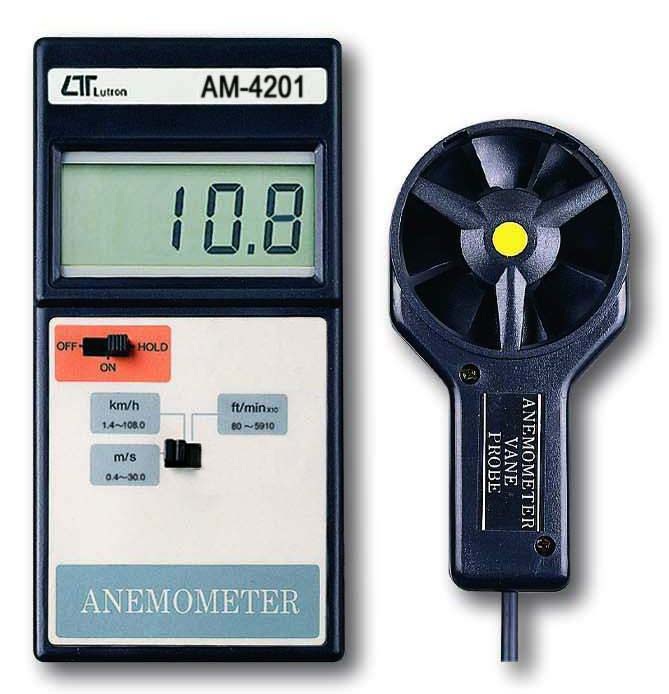How to Preserve and Take Care Of Your Anemometer to Make Certain Long Life
How to Preserve and Take Care Of Your Anemometer to Make Certain Long Life
Blog Article
Checking Out the Functions and Benefits of Anemometers for Weather Condition Lovers and Experts
Anemometers stand as critical devices in the realm of weather condition monitoring, accommodating both enthusiasts and skilled professionals alike. These devices offer a home window right into the vibrant world of wind patterns and speeds, offering indispensable data for meteorological analysis and projecting. From mug anemometers to sonic anemometers, each type brings its distinct collection of applications and benefits, clarifying different facets of weather. As we explore the features and benefits of anemometers, a much deeper understanding arises not only of dominating climate phenomena but additionally of the more comprehensive effects for markets like wind energy production and environmental study.
Importance of Anemometers in Climate Surveillance
Anemometers play a crucial function in weather tracking by providing exact dimensions of wind rate, aiding in forecasting and understanding climate patterns. These instruments, varying from conventional cup anemometers to modern ultrasonic anemometers, are necessary for meteorologists, researchers, and weather condition fanatics alike. By measuring wind rate, anemometers assist in figuring out the intensity of weather condition phenomena such as twisters, cyclones, and tornados. Additionally, they supply beneficial data for air travel, maritime procedures, and numerous markets that are delicate to wind problems.

Sorts Of Anemometers and Their Applications
The most usual types of anemometers consist of cup anemometers, vane anemometers, hot-wire anemometers, and ultrasonic anemometers. Mug anemometers consist of 3 or four mugs mounted on straight arms that rotate with the wind, gauging its speed. Vane anemometers, on the various other hand, use an openly rotating vane to straighten with the wind direction, supplying both wind speed and instructions dimensions.
Mug anemometers are robust and appropriate for general weather condition surveillance, while vane anemometers are favored for directional measurements. Ultrasonic anemometers are non-intrusive and provide high precision, typically utilized in research and specialized weather condition tracking applications.
Benefits of Making Use Of Anemometers in Projecting
In meteorology, the use of anemometers provides vital advantages for boosting the accuracy of climate projecting. Anemometers determine wind speed and direction, supplying crucial data for forecasting climate patterns. By integrating wind data into projecting designs, meteorologists can much better comprehend the activity of weather condition systems, anticipate adjustments in weather, and issue much more accurate projections.
In addition, anemometers play an essential role in examining possible weather threats. Keeping track of wind rates aids forecasters anticipate severe climate events such as hurricanes, tornadoes, and winter season tornados with greater precision. This early caution system allows authorities to issue timely notifies and apply necessary safety and security measures, minimizing the risks to life and building.
In addition, anemometers help in enhancing renewable resource production. By evaluating wind patterns, meteorologists can determine suitable locations for wind ranches and anticipate power outcome, adding to the efficient generation of wind power.

Anemometers in Wind Energy Production
Offered the critical function anemometers play in giving exact wind information for weather condition projecting and hazard assessment, their importance reaches the world of wind power manufacturing. Anemometers are necessary instruments in the field of wind power, where the dimension of wind rate and instructions is important for determining the expediency and effectiveness of wind generator installments. By properly gauging wind rates at varying elevations, anemometers help enhance the placement and layout of wind turbines to optimize power result.
In wind ranches, anemometers are purposefully positioned to my site accumulate real-time wind information that is made use of to evaluate the prospective energy production of a site. This data contributes in determining the economic viability of wind energy projects and in projecting power generation to guarantee grid security. In addition, anemometers help in checking wind problems to maximize wind turbine efficiency, stop damage from high winds, and ensure the safety of employees working in the area of wind turbines.
Enhancing Climate Recognizing With Anemometers

Anemometers play a crucial function in improving our understanding of microclimates. These localized weather can vary considerably from broader regional forecasts, making it browse around this web-site vital to have precise information for particular locations. anemometer. By tactically positioning anemometers in various areas, scientists can gather in-depth information on just how wind acts in different surfaces, city atmospheres, or bodies of water
In addition, anemometers contribute to enhancing weather condition forecasting models by supplying real-time information on wind behavior. This information is especially useful for forecasting severe weather events, maximizing farming practices, and supporting sectors like aeronautics and maritime navigating. On the whole, anemometers are very useful instruments that enable us to delve much deeper right into the intricacies of weather systems, inevitably leading to even more precise predictions and better-informed choices.
Verdict
Finally, anemometers play a critical duty in climate tracking and forecasting by determining wind speed and direction. They are essential devices utilized by climate enthusiasts and professionals to gather precise data for anticipating climate patterns and evaluating possible effects. Anemometers additionally have applications in wind power production, directory additional highlighting their significance in both meteorology and renewable energy fields. In general, anemometers add to improving our understanding of weather phenomena and enhancing projecting capabilities. anemometer.
From mug anemometers to sonic anemometers, each kind brings its unique set of advantages and applications, dropping light on numerous elements of climatic problems. These tools, varying from traditional cup anemometers to modern ultrasonic anemometers, are vital for meteorologists, researchers, and weather condition enthusiasts alike. The most usual types of anemometers consist of cup anemometers, vane anemometers, hot-wire anemometers, and ultrasonic anemometers. Cup anemometers are robust and appropriate for general climate surveillance, while vane anemometers are preferred for directional dimensions. Anemometers are essential instruments in the field of wind power, where the dimension of wind speed and instructions is important for establishing the usefulness and performance of wind generator setups.
Report this page